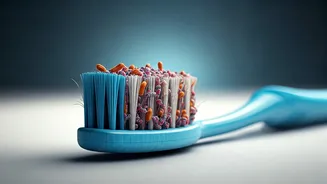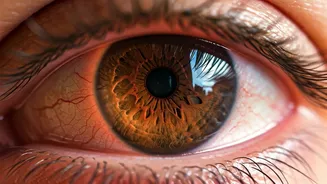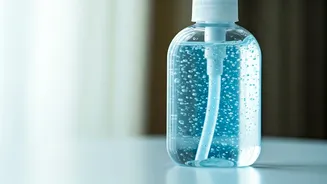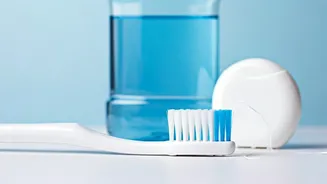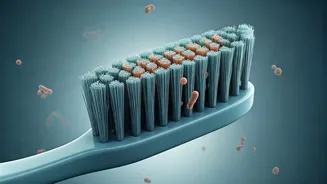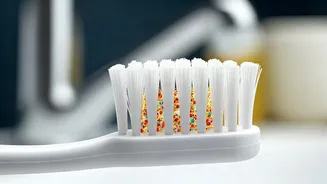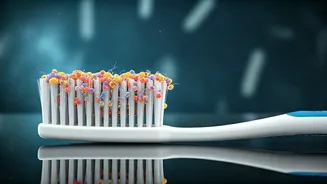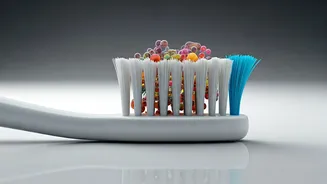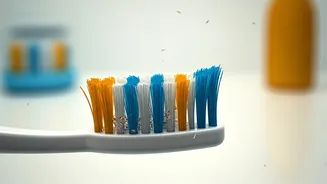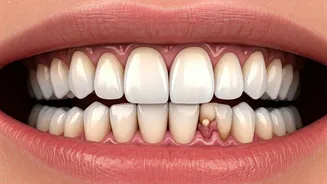Bacteria's Secret Hideout
Your toothbrush, a tool meant for cleaning, can paradoxically become a breeding ground for millions of bacteria. Think about it: every time you brush, you're
potentially introducing these microbes into your mouth. Studies show that toothbrushes, especially those stored in moist environments like bathrooms, provide an ideal setting for various bacteria to flourish. These microscopic organisms can include everything from common oral bacteria to potentially harmful pathogens, posing a significant risk to your overall well-being. This hidden ecosystem is something everyone should be aware of to ensure proper oral health practices.
Types of Invaders
The bacteria that colonize your toothbrush are diverse. Common culprits include Streptococcus mutans, a primary contributor to tooth decay, and various species of Staphylococcus, some of which can cause infections. Other bacteria frequently found are from the genera Pseudomonas and Klebsiella, which are known for causing infections in immune-compromised individuals. The concentration and types of bacteria present depend on several factors, including how the toothbrush is stored, the user's oral health, and the duration of use. Moreover, toothbrushes can also harbor viruses, adding to the health concerns. Understanding the range of potential pathogens is crucial for appreciating the importance of proper toothbrush hygiene.
Risks to Your Health
The presence of bacteria on your toothbrush carries several health risks. Re-introducing these organisms into your mouth can lead to various problems, from gum disease and cavities to infections. For individuals with weakened immune systems, the risk is particularly high, as they are more susceptible to infections. The bacteria can also enter the bloodstream through cuts or abrasions in the mouth, potentially causing more severe systemic infections. In addition, the continuous exposure to bacteria can disrupt the oral microbiome, the complex community of microorganisms that naturally live in your mouth, which can negatively affect your overall health. Therefore, maintaining a clean toothbrush is not just about oral hygiene; it's also about safeguarding your general health.
Protecting Yourself
Several simple steps can help minimize the bacterial load on your toothbrush. Start by thoroughly rinsing your toothbrush with tap water after each use to remove food particles and debris. Store your toothbrush in an upright position, allowing it to air dry fully between uses, as bacteria thrive in moist environments. Avoid storing your toothbrush in close proximity to other toothbrushes to prevent cross-contamination. Replace your toothbrush every three to four months or sooner if the bristles become frayed. Consider using a toothbrush sanitizer or UV cleaner to further eliminate bacteria. By implementing these practices, you can effectively reduce the risk of introducing harmful bacteria into your mouth and protect your overall health.
Beyond the Basics
While the basics are crucial, there are additional steps to maximize your toothbrush hygiene. Consider periodically cleaning your toothbrush with mouthwash that contains antiseptic properties. Never share your toothbrush with anyone else, as this can easily spread bacteria. If you've been sick, it is especially important to replace your toothbrush afterward to prevent re-infection. Consult your dentist if you have any questions or concerns about your toothbrush hygiene practices. Regularly assessing and improving your oral hygiene routine will ultimately support your health and well-being. Make sure to keep this important aspect of your health top of mind!
